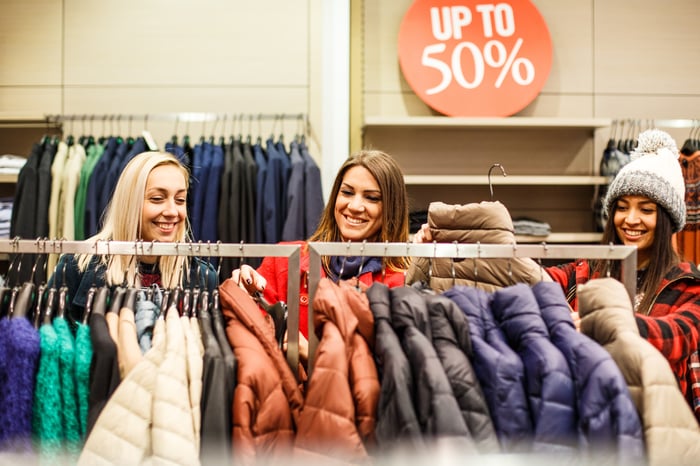There's bad, and then there's really bad. Simon Property Group (SPG 1.40%) started 2020 out with a bad problem, and then the pandemic made it really bad. But this mall landlord has a history of using bad times to its advantage. If its efforts to do that this time around work out, it could be pretty attractive for long-term investors, even though its stock has more than doubled over the past year.
A quick history lesson
The 2007-to-2009 recession was one of the deepest in the history of the United States -- in fact, it was dubbed the Great Recession. Mall landlord Simon Property Group ended up cutting its dividend from $0.90 per share per quarter to $0.60. For three quarters, that was made up of a mixture of stock and cash as the real estate investment trust (REIT) looked to preserve funds.
REITs are specifically designed to pass income on to shareholders, so the dividend cut was a bad sign. However, the company didn't simply hunker down and hope for the best. It continued to build the new properties it already had in process, and in 2009 it agreed to buy Prime Outlets. In other words, it used the downturn to get better. That eventually translated to improved performance, and helped the dividend grow from $0.60 per share per quarter to $2.10 in early 2019.
A look at the pandemic
There's clearly a different set of issues today, but Simon isn't sitting still during its current troubles any more than it did during the Great Recession.

Image source: Getty Images.
Heading into 2020, Simon had been working hard to reposition its malls as online shopping has continued to grow in importance. Dubbed the retail apocalypse, this trend has forced Simon to retenant its properties as struggling retailers close shops. When the pandemic hit, many retailers that had been limping along simply couldn't hang on any longer. And others used the health crisis to refocus their businesses, increasing the prominence of online shopping at the expense of physical locations.
As the government mandated non-essential businesses to close down early in the pandemic, Simon cut its dividend from $2.10 per share per quarter to $1.30. However, it continued to build out the two overseas outlet centers it had been building and closed on a deal to buy competitor Taubman Centers. Simon also worked with partners to buy a collection of iconic retail brands that had fallen into bankruptcy, including J.C. Penney, Brooks Brothers, and Forever 21, among others. Just like the last downturn, Simon has tried to improve its business so it comes out the other side of this period a better company than when it entered it.
While there's obviously no guarantee that the REIT can duplicate the performance it achieved after the Great Recession, it increased its full-year projections for 2021 when it reported first-quarter earnings. And then in June, the REIT announced a nearly 8% dividend hike. Clearly, things are improving, which helps explain the stock's big gain over the past year. However, even after that advance, the stock is still down nearly 45% from its 2016 highs.
There are good reasons for that, as Simon still has to work through the retail apocalypse headwind. However, CEO David Simon noted during the company's first-quarter 2021 earnings conference call that March sales volumes at its properties were higher in 2021 than they were in the same month of 2019. This suggests that malls are not going away, and that the industry really just needs to adjust to a new environment.
That will likely mean weaker malls closing and better malls becoming more attractive. And Simon happens to own some of the best malls and outlet centers in the country. For example, prior to the pandemic, the REIT's trailing five-year net operating income growth was second only to peer Macerich. Re-tenanting takes time, but Simon looks well positioned to be a net winner, particularly as it used the pandemic to strengthen its business.
Still an opportunity
As new variants clearly show, the world hasn't quite figured out how to deal with the coronavirus just yet. However, the world is starting to return to a more normal level of activity. Simon is already seeing the benefits of this in its business, and passing those on to investors via higher dividends. If the recovery process this time around looks similar to the last time, investors could be in for a long period of dividend growth here. And that, in turn, would likely lead to a higher stock price.
The advance so far is really the bounce back from the initial pandemic fears. What comes next is likely to be a slower process, but one that could be very rewarding for dividend investors. And now, with the dividend only just starting to be increased again, is a great time for a deep dive.






